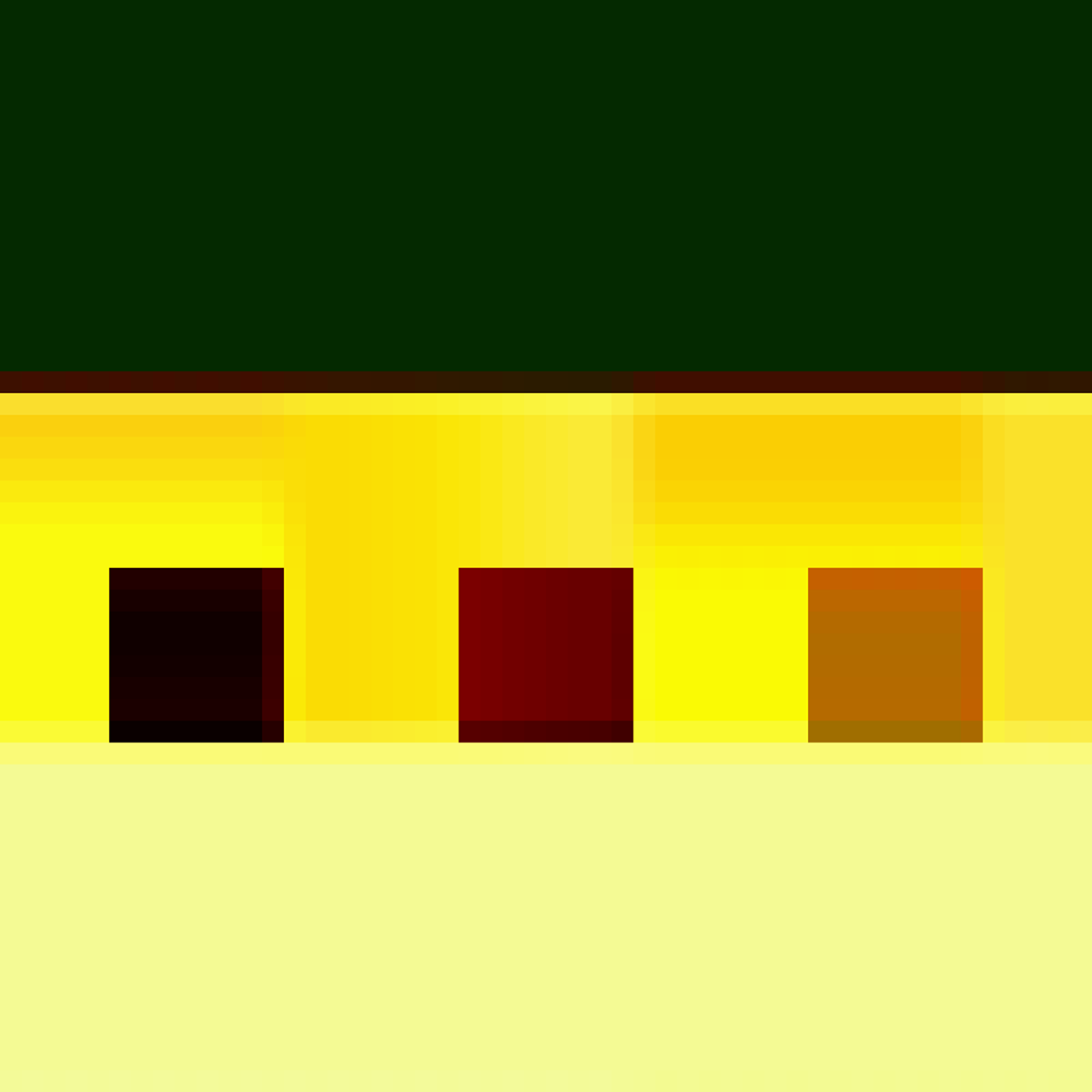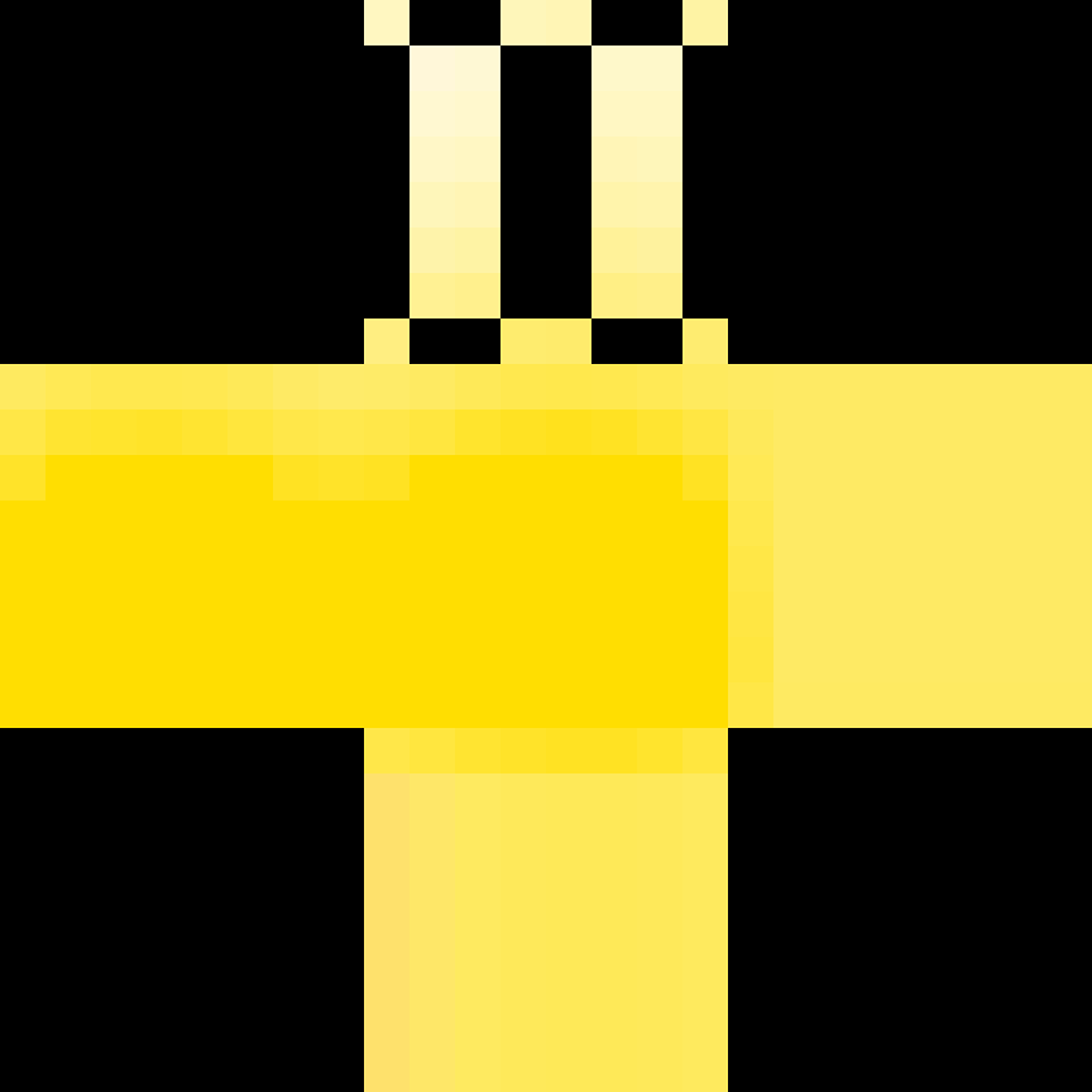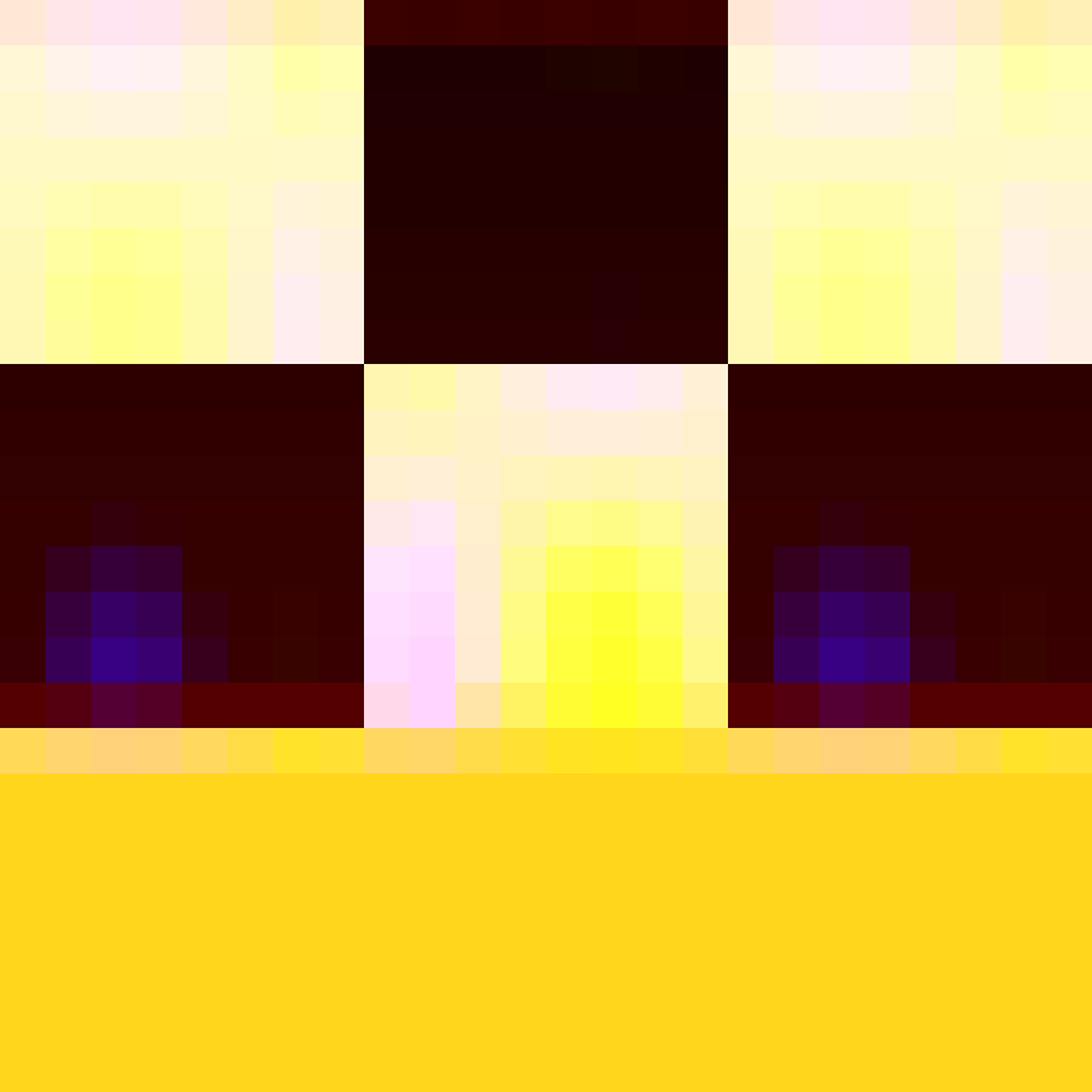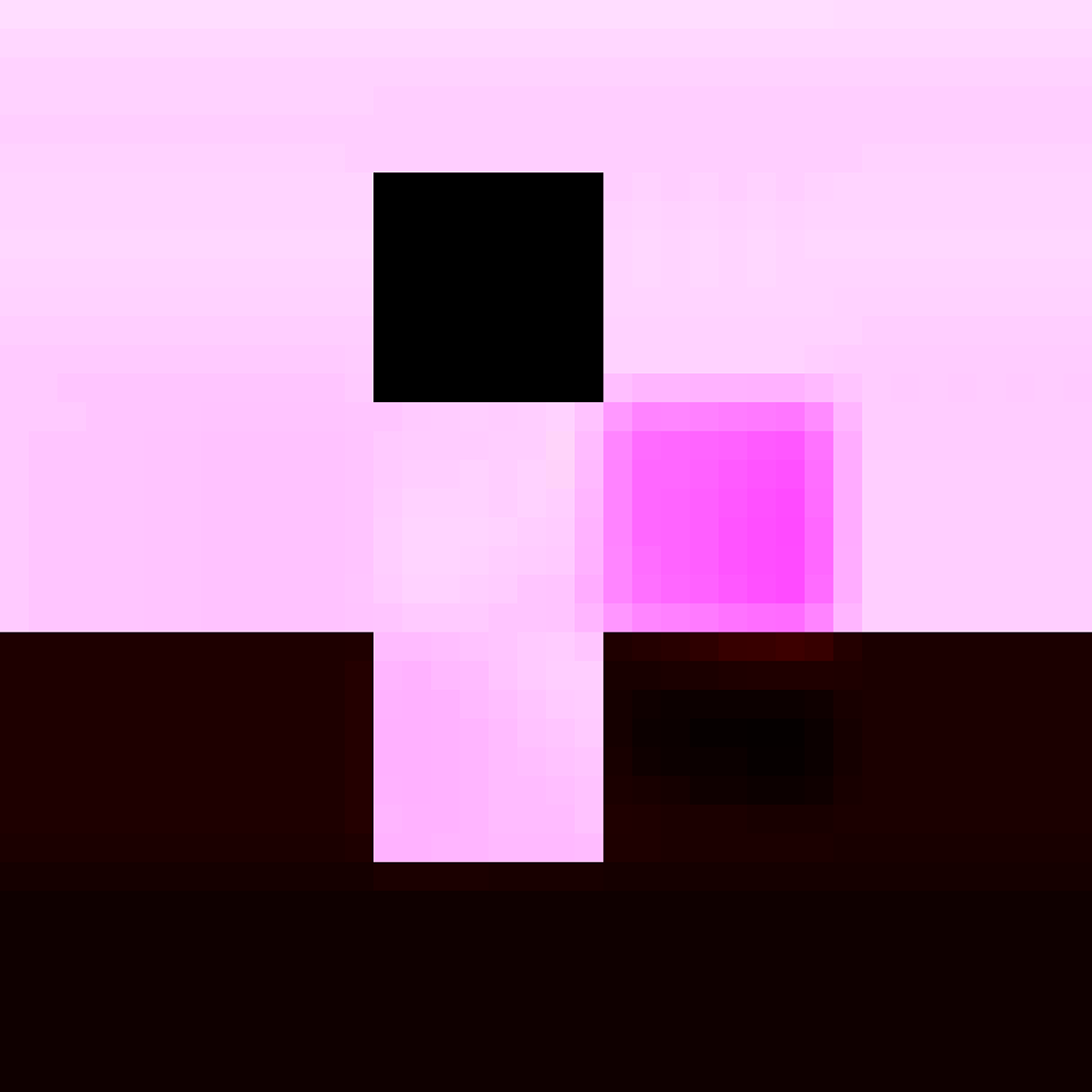Digital Suprematism - Geometric Abstraction
During the early 2000s, Tom R. Chambers began to look at the pixel within the context of Suprematist and Geometric Abstractionist art. He equated the pixel with the works of non-objective artists like Wassily Kandinsky, Kazimir Malevich, Josef Albers, Barnett Newman, Mark Rothko, Ad Reinhardt, Piet Mondrian and others. They generated works to establish an abstract visual language of the sublime, pure color, geometric form, deep contemplation and metaphysical pursuit of the truth.
The pixels or "Pixelscapes" - as he calls them - conform with many of these non-objective artists' works. They are a revelation for him when compared to these non-objective works generated many years before the pixel and Digital Revolution.

This body of work is derived from pixel configurations, and they stem from digitized reproductions of Kazimir Malevich's early works prior to his Suprematism and “Black Square”. They are magnified, filtered and precisely isolated to provide geometric abstractions within color-field settings.
These "Pixelscapes" are brought to the forefront to celebrate Malevich's latent and ultimate creativity which gave way to Suprematism with the display of "Black Square" and other works in 1915 as part of the Last Futurist Exhibition of Paintings 0,10.
They rival works in Suprematism, Abstraction, Minimalism, Geometric, and Color-field art movements.

These pixel configurations are brought out large-scale. This method not only conjures up Suprematism, Geometric Abstraction, Minimalism and Color-field for consideration, but also calls forth emotions, feelings, and responses in the viewer.
They have a geometrical advantage due to their inherent, quadrilateral formatting. In combination, they provide grids, planes and juxtapositions of color. And the color scheme is in situ (natural), because of the source image.

JD Jarvis, Art Critic/Artist and coauthor of Going Digital: The Practice and Vision of Digital Artists (ISBN 1-59200-918-2) (USA):
"Tom R. Chambers has been experimenting for several years with his series of 'Pixelscapes' exhibitions. Utilizing the most basic unit of any computer graphic, the single pixel, his 'Pixelscapes' serve as colorful pathways into the purely metaphysical aspects of art which, by virtue of presenting so little, leads the viewer to so much in terms of their own emotional content. This visual poetry contains the ironic connection between Modernist philosophy which moved visual art from figurative representational pictures of the physical world into an expressive and emotional world of abstraction; and the digital realm in which the purely abstract unit of one pixel off - one pixel on, has been utilized to reproduce once again, with breath taking accuracy the physical world. Now, Chambers has shown a path by which this tool, which so often serves hyper-reality, is forced to reveal the abstract soul at its very core."

One Month Gallery (OMG) curators, Moscow (Russia):
“Tom R. Chambers is a Texan with a Russian, Suprematist soul. He has repeatedly introduced the modern trend of new media art to the masses. He has brought Minimalism to the pixel. In 2000, Chambers began to look at the pixel in the context of Abstraction and Minimalism. And he is currently working with interpretations of Kazimir Malevich’s 'Black Square' and other Suprematist forms.
His work calls our attention to visual singularity, which is all that we see in the digital universe. Since the pixel corresponds to what we call 'subatomic particles' in our physical universe, Chambers’ work connects us directly with the feeling of Russian Suprematism, described as the spirit that pervades everything, and pays tribute to the faith in the ability of abstraction to convey net feeling in the work.”

Andrey Martynov, Curator, Novosibirsk (Russia):
"Chambers' 'Pixelscapes' have been exhibited in Novosibirsk and also at the Solovetsky Monastery. He is working with the idea of a small unit or cell of an image, which shows a fantastical world through print. He will show 'My Dear Malevich' at the Fourth Novosibirsk International Festival of Digital Imaging at the Novosibirsk State Art Museum. It will be a pleasure for us to show this series that stems from the Suprematist traditions of the great Malevich.
He was a remarkable artist of the 20th century who looked deeply into the philosophical content of images. Chambers uses this same philosophy in his long-term art projects such as 'Pixelscapes'. And what is especially pleasant is that he brings his understanding and knowledge to art students."

Shankar Barua, Artist/Musician/Writer/Designer (Founder and Managing Trustee for The Academy of Electronic Arts, creator of "The Idea" and Director of The Carnival of e-Creativity & Change-agents Conclave) (India):
"As an old believer in the singular importance of Tom R. Chambers' creative explorations with regard to driving a leading-edge stream of evolution of the digital-still-image-as-art into this new millennium, I am absolutely delighted to see him work with his 'Pixelscapes'. In this rising new era of burgeoning empowerment of individuals by technology across all streams of human endeavour, all over the world, when the more popular leading-edges of many creative streams are often about little more than fascination and infatuation with the shiny new baubles of new mediums in themselves, it is important to so manifest and be reminded that high art should certainly derive from, and serve, much deeper folds in the brains of any individual, community and generation."

Michael Takeo Magruder, New Media Artist and Researcher, King's Visualisation Lab, King's College London, London (England):
"I very much enjoy the critical, analytical and aesthetic nature of the artwork. Much of my own work is an exploration of the digitally minimal and the fundamental structures that comprise media technology - so I feel well-placed to understand and comment on Chambers' concerns in this area. I feel that many contemporary artists working in New Media utilise the pixel without understanding its core essence in terms of both technology that creates it and the connections it has to the art historical past.
I find the premise of the work is a relevant extension of the Suprematism and Minimalism art movements of the 20th century, in which Chambers revisits critical explorations from the past and augments his investigations with present day technologies and context."

Harold Olejarz, Artist and Art Educator (Eisenhower Middle School; U.S. Department of Education National Blue Ribbon School) (USA):
"At the beginning of the 20th century Kazimir Malevich was at the forefront of a revolution in art. His work took chances and explored new directions in representation. Malevich was an experimenter, pushing art to the edges.
Today, at the beginning of the 21st Century, Tom R. Chambers' work bridges 100 years of art history and creates connections between his own ground-breaking work as a digital artist and the ground-breaking work of Malevich. Chambers' 'Pixelscapes' explore issues of digital representation as well as refer back to the seminal dialog about representation that Malevich and his contemporaries initiated. Look beneath the elegant simplicity of the art of Malevich and Chambers and you will find the essential building blocks of art. Look closely at Chambers' images and you will find the building blocks of today's digital revolution."

Bruce Hanks, Manager, University of Winnipeg Instructional Network, Center for Teaching, Learning and Technology (CDDL), The University of Winnipeg (Canada):
"In 2000 Tom R. Chambers began his ongoing exploration under the namesake of 'Pixelscapes' (a pixel [picture element]) being a single point in a graphic image, an abstract sample.). In his article 'The pixel as Minimalist Art', reference is made to Malevich's 'Black Square' and 'Black Cross'.
Chambers removes the pixel from the screen and places it on a gallery wall as large digital images, a transfer that becomes an all at once opportunity to see the totality of the work. To enter a space and see larger than life pixels displayed one after the other in all their complex diversity allows for a truly meditative experience. The pixels become a vast universe of the non-objective."

Wu Nan, Art Professor, Fine Arts Department, Zhaoqing University (China):
"Tom R. Chambers is a blend of the West and the East ... frank and charming with a disposition of an Eastern writer ... and this combination seems consistent when viewing his 'Pixelscapes', which are full of humanity, morality and caring. His creative work has a very different connotation: bright and fashionable within a multi-colored grid or graph. The meaning is manifested within a Western world's characteristics of materialism, public display and desire with curious, affective tonal range and realm of imagination ... it's beckoning. Chambers seems to want to elucidate a subject ... make a significant attempt at clarifying a notion. His appreciation of Kazimir Malevich's Suprematist artwork is only a way or an excuse to present an artistic trend through iconography that borders on 'religion'. The 'Pixelscapes' that comprise the project represent a collective expression. It is direct and effective, which is the most obvious characteristic of contemporary art."

Don Archer, Director, Museum Of Computer Art (MOCA) (USA):
"Tom R. Chambers has been an iconoclastic digital artist and passionate teacher of digital art for many years. He was visiting lecturer on digital and new media art and digital photography in the Fine Arts Department of Zhaoqing University in Zhaoqing, China.
His own art is a celebration of digital abstraction and reductionism in a long series of works that he calls 'Pixelscapes'. His series called 'My Dear Malevich' is a tribute to the celebrated Ukranian-born artist Kazimir Malevich (1878-1935) who was founder of Suprematism, a non-representational art that featured geometric forms and shapes. These images are a confirmation of Chambers' dedication to minimalist art and to the pixel, in all its potential and limitations."

Bill Spencer, Director of Technology, Nocona Independent School District, Nocona, Texas (Chambers' hometown.) (USA):
"The work is very interesting to say the least. I am a biologist by training, and I compare the pixel to a living cell. Alas, but even the cell and pixel have even smaller components to consider.
I do not know much about Minimalism, but I am interested in finding the basic unit of thought, learning, intelligence, and personality.
Where the realm of thought intersects with the laws of physics that govern this plane of existence may hold the answers to the nature of human experience including art appreciation and other high levels of thinking."

Allan Revich, Artist and Director of Digital Salon (USA):
"Tom R. Chambers is blessed with an uncanny ability to marry high concept with visual beauty. He demonstrates his ability to do so with his 'Pixelscapes', where he riffs on the work of the Suprematist artist, Kazimir Malevich, to create wonderfully intriguing art pieces.
Chambers' 'Pixelscapes' merge the analog and digital worlds, and the past with the present to create a new kind of imagery that brings wall-based visual art into the 21st century.
His work is interesting to think about, and pleasant to look at. What more can we ask for from the art on our walls?"

Istvan Horkay, Artist (Collaborated with Peter Greenaway [film director] on the "Tulse Luper" film series.) (Hungary):
"Chambers' art epitomizes the double meaning of the word, fragment, an incised part of something already in existence ... and just because of this incision ... is an injury to the finished surface, to the tangle of writing or a finished picture. It is the same and not the same at the same time.
Once the signs are scars, then the wounds will tell tales of some non-alleviated history. The post-human art of our era has moved the farthest away from the ideal which reached the calmness of total emptiness by putting instincts to silence ... consequently, Chambers' Pixelcapes."

Harvey J. Bott, Sculptor/Assemblist (DoV concept) (USA):
"Tom R. Chambers' oeuvre stratagem is an investiture of nearly ineffable wonder that says virtual past-present-future brought to the e-world and now the reality of tangible documentation in a venue that Malevich would have been proud to share with you."
Laurence Gartel (He is considered the "father of the digital art movement", and he has been a pioneer in this field for over 40 years.) (USA):
"What can be said about these 'Pixelscapes'? They're beautiful ... DYNAMIC. Like Josef Albers except this work is lyrical. I really like the evolution of the square. It's a movement that reminds me of my movement. I also like the squares that surround Chambers in a portrait. Does this mean that the artist is the original square? The artist turns into color? Or is it so that the artist turns into art?"

GEOMETRIC ABSTRACTION is a form of abstract art based on the use of geometric forms sometimes, though not always, placed in non-illusionistic space and combined into non-objective (non-representational) compositions. Although the genre was popularized by avant-garde artists in the early twentieth century, similar motifs have been used in art since ancient times. Geometric abstraction is present among many cultures throughout history both as decorative motifs and as art pieces themselves. Islamic art, in its prohibition of depicting religious figures, is a prime example of this geometric pattern-based art, which existed centuries before the movement in Europe and in many ways influenced this Western school. Throughout 20th-century art historical discourse, critics and artists working within the reductive or pure strains of abstraction have often suggested that geometric abstraction represents the height of a non-objective art practice, which necessarily stresses or calls attention to the root plasticity and two-dimensionality of painting as an artistic medium. Thus, it has been suggested that geometric abstraction might function as a solution to problems concerning the need for modernist painting to reject the illusionistic practices of the past while addressing the inherently two-dimensional nature of the picture plane as well as the canvas functioning as its support. (Wp)
SUPREMATISM is an early twentieth-century art movement focused on the fundamentals of geometry (circles, squares, rectangles), painted in a limited range of colors. The term suprematism refers to an abstract art based upon "the supremacy of pure artistic feeling" rather than on visual depiction of objects. (Wp)
MINIMALISM describes movements in various forms of art and design, especially visual art and music, where the work is set out to expose the essence, essentials or identity of a subject through eliminating all non-essential forms, features or concepts. The European roots of minimalism are found in the geometric abstractions of painters associated with the Bauhaus, in the works of Kazimir Malevich, Piet Mondrian and other artists associated with the De Stijl movement, and the Russian Constructivist movement, and in the work of the Romanian sculptor Constantin Brâncuși. (Wp)
COLOR FIELD is characterized primarily by large fields of flat, solid color spread across or stained into the canvas creating areas of unbroken surface and a flat picture plane. In color field painting, color is freed from objective context and becomes the subject in itself. (Wp)


















